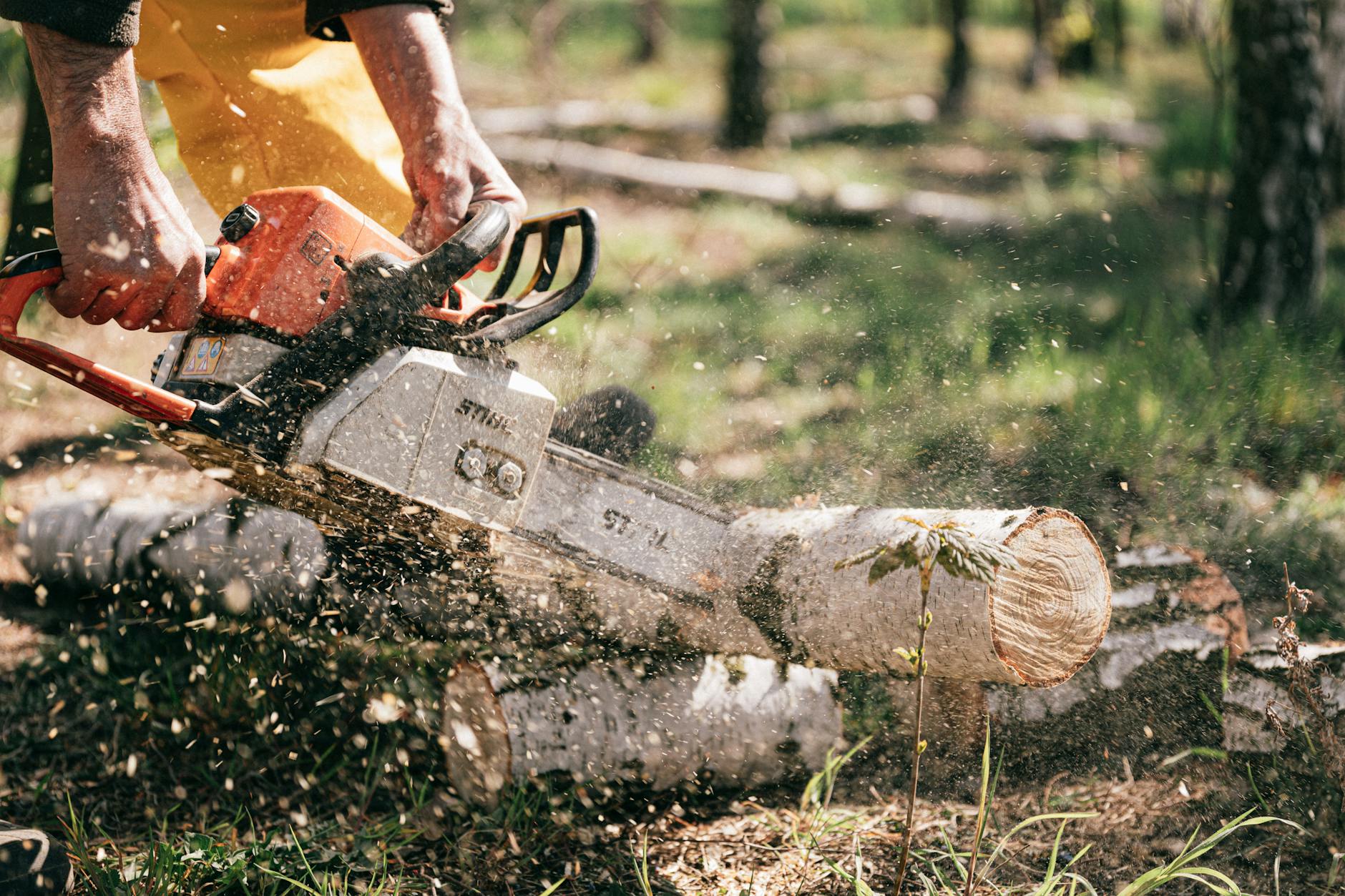Chainsaws are ubiquitous tools in various industries, from the towering pines of a forestry operation to the controlled chaos of a demolition site. This article delves into the chainsaw’s fascinating history, exploring its initial surprising purpose, advantages, environmental impact, and essential safety precautions.
A chainsaw is a mechanized saw that utilizes a looped chain with sharp teeth to slice through wood, concrete, and even metal. It has become an indispensable tool across numerous industries, forever altering how we interact with these materials.
Importance of understanding the reason for chainsaw invention
Understanding the original purpose behind the chainsaw sheds light on its significance in the industries that rely on it today. It also allows us to appreciate the technological advancements that have transformed chainsaws into the efficient, precise, and versatile tools we know today.
History of chainsaw invention
Early designs and prototypes
Believe it or not, the chainsaw’s origin story isn’t rooted in felling trees. The first iterations, developed in the 1830s by German physician Bernhard Heine, were designed for a far more delicate task: symphysiotomy. This surgical procedure involved separating a woman’s pubic bones during childbirth to ease delivery. These early “osteotomes,” as they were called, were cumbersome and required two people to operate.
First practical chainsaw
The 20th century ushered in a new era for the chainsaw. In 1926, German engineer Andreas Stihl revolutionized the tool by creating the first practical chainsaw specifically designed for forestry work. Stihl’s invention was a game-changer – lightweight and user-friendly, making it ideal for maneuvering through dense forests.
Evolution of chainsaw technology
Since Stihl’s groundbreaking invention, chainsaw technology has undergone a dramatic evolution. Modern chainsaws boast increased power, efficiency, and precision. Manufacturers have also prioritized environmental concerns, developing models with lower noise emissions and cleaner exhaust fumes.
The purpose of chainsaws
Forestry industry
The forestry industry remains the most prominent user of chainsaws. They are used for felling trees, preparing them for transport (cutting them into logs), and clearing land for new plantations. Chainsaws have significantly improved logging efficiency, although their impact on deforestation requires careful consideration.
Tree removal and pruning
Arborists rely heavily on chainsaws for tree removal and branch pruning. These tools allow them to work quickly and efficiently, ensuring the safety of both the arborist and the surrounding environment.
Construction and demolition
Chainsaws aren’t limited to organic materials. In construction and demolition, they are used for cutting through concrete, asphalt, and even some metals during controlled demolition projects.
Niche applications
Beyond these primary uses, chainsaws have found applications in unexpected areas. Ice sculptors use specially designed chainsaws to create intricate ice sculptures, while firefighters sometimes utilize them to clear debris or create firebreaks during wildfires.
Advantages of chainsaws
Efficiency
One of the most significant advantages of chainsaws is their unmatched efficiency. They can cut through materials considerably faster than traditional hand saws, significantly increasing productivity across various industries.
Precision
Modern chainsaws are designed for precise cuts. This is crucial in forestry, where proper felling techniques minimize damage to surrounding trees and the ecosystem. Arborists also benefit from this precision when pruning branches to promote healthy tree growth.
Versatility
The ability to cut through a wide range of materials makes chainsaws incredibly versatile. From wood and concrete to even some metals, chainsaws offer a single solution for diverse cutting needs.
Environmental impact of chainsaws
Deforestation
The increased efficiency of chainsaws has undoubtedly contributed to deforestation, a major environmental concern. While chainsaws are a tool, it’s important to acknowledge the role they play in large-scale logging operations that can negatively impact ecosystems.
Noise pollution
Chainsaws are undeniably loud machines. This noise pollution can disrupt wildlife habitats and can be harmful to human hearing if proper protection isn’t used.
Air pollution
The exhaust fumes emitted by gas-powered chainsaws contribute to air pollution, impacting air quality, especially in enclosed environments.
Safety precautions when using chainsaws
Chainsaws are powerful tools that demand respect. Here are some crucial safety precautions to remember:
Proper training and experience
Operating a chainsaw safely requires proper training and experience. Users should understand the tool’s functionality, safe operating procedures, and emergency shut-off techniques.
Protective gear
Protective gear is essential for chainsaw users. This includes a sturdy helmet with a face shield, cut-resistant gloves, ear protection to dampen noise, and chaps or trousers made from a special material that resists chainsaw cuts.
Maintenance and inspection
Regular maintenance and inspection are vital for chainsaw safety. Keeping the chain sharp, lubricating it properly, and checking for loose parts or malfunctions can help prevent accidents. Refueling safely in a well-ventilated area is also crucial.
Working conditions
Be mindful of the working conditions when using a chainsaw. Avoid using it in wet or slippery conditions, and never operate a chainsaw while fatigued or under the influence of alcohol or drugs. Always be aware of your surroundings and maintain a safe distance from others when operating the chainsaw.
Working with a partner
Whenever possible, it’s advisable to work with a partner when using a chainsaw, especially in remote areas. This allows someone to call for help in case of an accident.
Recap
This article has explored the fascinating history of the chainsaw, its diverse applications across industries, the environmental considerations surrounding its use, and the essential safety precautions for chainsaw operators.
Final thoughts on chainsaw invention and usage
Chainsaws have revolutionized the way we work with various materials. Their efficiency, precision, and versatility have transformed industries like forestry, construction, and arboriculture. However, it’s crucial to acknowledge the environmental impact of chainsaw use, particularly on deforestation and air pollution. By adopting sustainable forestry practices, using cleaner-burning models, and prioritizing safety measures, we can ensure that chainsaws continue to be a valuable tool while minimizing their environmental and safety risks.
As an Amazon Associate I earn from qualifying purchases.




